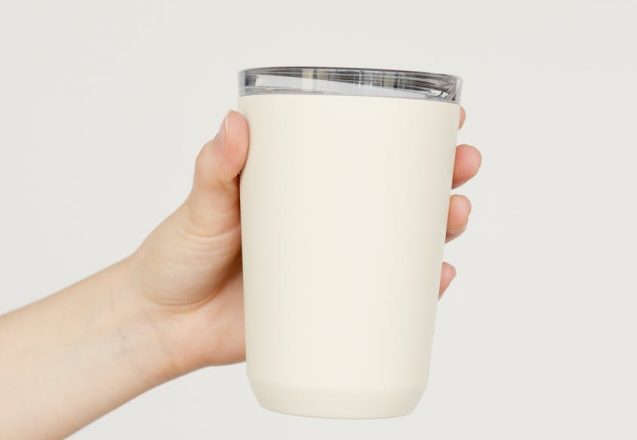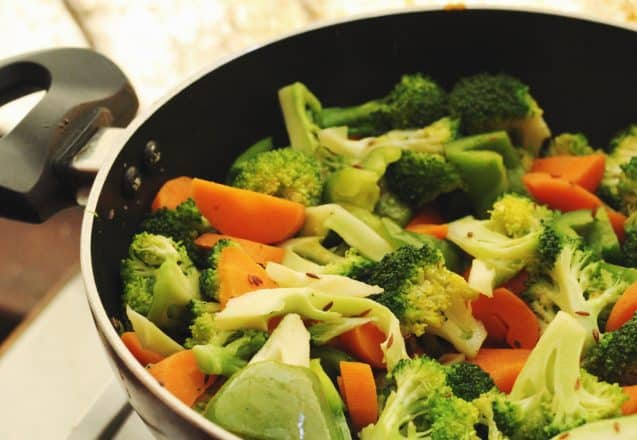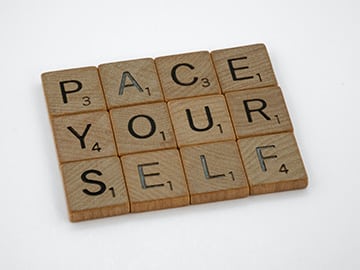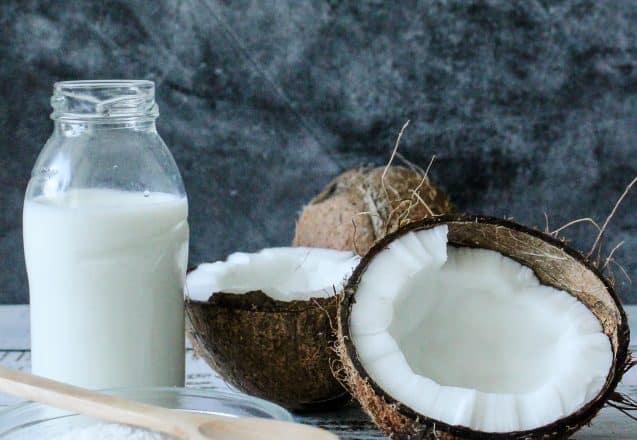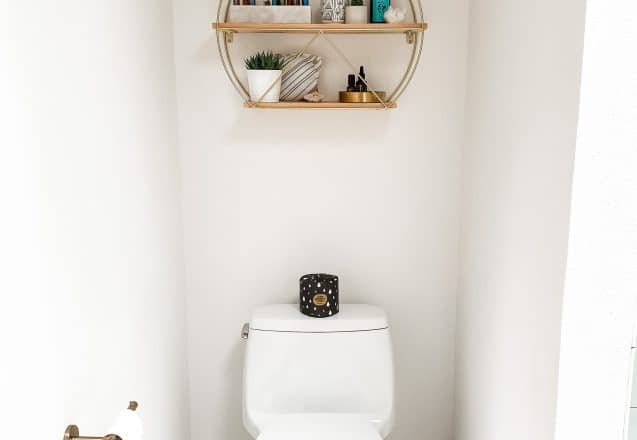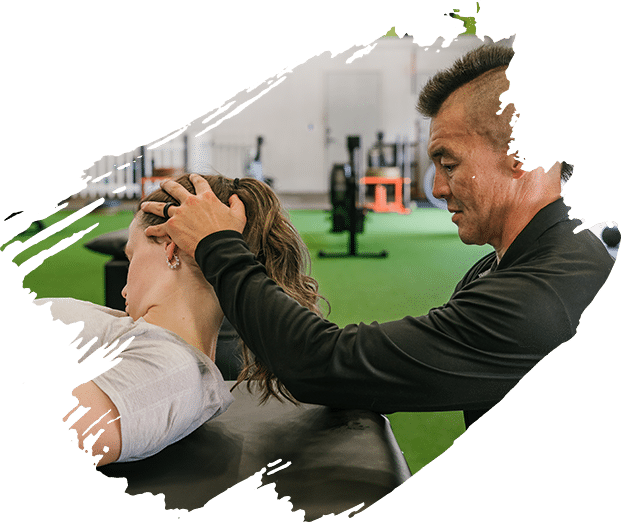Benefits Of Green Tea
We know that your diet, including what you drink is just as important to improving your health as exercising at Habitat Health and Fitness in Winter Haven, FL. It's one reason we promote healthy diets and encourage making healthy choices when you want something to drink. While water is always a good choice, another viable option is green tea. There are many health benefits, besides it being low in calories and devoid of added chemicals. You have to be sure to keep the green tea its healthiest, so don't add sugar or sugar substitutes. If you need a sweet drink, add a bit of honey and slowly reduce the amount you add if you can.
What are the health benefits of green tea.
If you want a beverage that can reduce the risk of prostate cancer, oral cancer, stomach, breast and pancreatic cancer, opt for green tea. According to a variety of studies, you need between three and five cups a day, although as little as one cup a day can help. It can also lower your risk for type 2 diabetes by as much as 33%, but that's only if you drink at least six cups a day.
If you want a boost to your metabolism, consider green tea.
Not only do the polyphenols----catechins such as EGCG---improve your metabolism, they also provide other benefits. EGCG---Epigallocatechin Gallate---help prevent neurodegeneration to protect you from diseases such as Alzheimer's, dementia and Parkinson's disease. They are antioxidants that help prevent neural damage and even reverse existing damage. Large studies showed adults that consumed three cups a day for years had far less cognitive impairment. It reduced the potential of Parkinson's by 30 to 40 percent. .
You'll have a better smile because green tea helps teeth and gums.
Whether you're fighting gingivitis, tooth decay or simply want better oral hygiene, consider drinking green tea daily. It has an antibiotic, antifungal effect to improve your oral health. That can also improve your breath, since bad breath often comes from bacteria in the mouth. Not only will your oral health improve, so will your bone health. Several studies indicate that women who drink green tea suffer from fewer fractures during perimenopause. Matcha tea---a type of green tea---is one of the best for this.
Green tea can help you lose weight. The catechins boost your metabolism and the tea is filling to reduce the amount of calories you consume. It also may help regulate your hormones and aid in reducing Buddha belly.
Green tea can also stabilize your blood sugar levels, which can help you lose weight and lower your risk of diabetes, abdominal fat and reduce sugar cravings. When you eat sugar, it increases insulin in your blood, which causes you to feel even hungrier.
Green tea can boost your immune system because of the antioxidants it contains. If you drink matcha tea, it has the most vitamin C, which also helps your immune system. Other types of green tea also contain vitamin C, but not as much.
Green tea can fight the signs of aging, particularly to your skin. It helps hydrate the body, which helps fade wrinkles. It reduces free radicals that can age skin and potential reduce the effects of photoaging.
Should You Rethink Dairy In Your Diet?
 We focus a lot on eating a healthy pre and post workout snack that contains protein and carbs. One of those options is yogurt and fruit and another is cheese and crackers. Many of the protein options come from dairy products, but is dairy in your diet really a healthy option or not. If you're lactose intolerant, milk products probably aren't the best thing to eat, even though most report that small amounts of cheese, cottage cheese or yogurt doesn't affect them. What about the rest of the people who aren't allergic or intolerant of dairy?
We focus a lot on eating a healthy pre and post workout snack that contains protein and carbs. One of those options is yogurt and fruit and another is cheese and crackers. Many of the protein options come from dairy products, but is dairy in your diet really a healthy option or not. If you're lactose intolerant, milk products probably aren't the best thing to eat, even though most report that small amounts of cheese, cottage cheese or yogurt doesn't affect them. What about the rest of the people who aren't allergic or intolerant of dairy?
Some dairy options are healthier than other dairy options.
Even within the same type of dairy products, such as a glass of milk or a pat of butter, you'll find differences. Choosing milk or dairy products made from milk that came from grass-fed cows is healthier. It's higher in omega-3 fatty acids and linoleic acid. Fermented dairy, like kefir, yogurt, cheese and cottage cheese are also more easily digested and particularly low in lactic acid, compared to a whole milk option.
There are 22 essential nutrients in milk.
On the plus side, milk has calcium, magnesium, phosphorus, zinc and potassium. It also is high in protein and contains vitamins A, B6, B12, E and K plus folate, thiamin, niacin, iron, riboflavin and selenium. It can provide adequate protein and improve blood sugar levels. There's still controversy over whether it's good for bones and teeth. The Nurses Health Study that followed thousands of nurses over a period of years found those that drank milk actually increased their risk of a fracture. Other studies show that countries that consumed the least amount of milk also had a lower incidence of osteoporosis.
Don't go for a low fat milk option over full fat.
People often automatically choose a low fat or no fat option, thinking it's healthier, but it's not. Manufacturers often add sugar to make it more palatable, since fat gives milk and milk products flavor. The fat keeps you feeling full longer so you'll eat less. While the Nurses study showed that milk didn't help protect bones from osteoporosis, other studies showed it did when consumed while growing. In older adults, it also helped reduce the plaque on teeth.
- If you're lactose intolerant, you'll experience bouts of gas, diarrhea and cramping after you eat or drink milk or milk products. Milk can also cause other reactions, such as increased and thicker mucus or skin rash.
- Drinking skim or low fat milk may trigger other reactions, like eczema or a skin condition similar to acne. It still occurred in full fat milk, but far less frequently.
- Yogurt and kefir provide other benefits beyond what milk provide and don't have the negatives that occur with milk. However, always choose ones that have no additives like sugar and preservatives.
- Even though milk is a good source of calcium, it may not be bioavailable or have a net gain of calcium. Some proteins in milk may actually cause calcium to leach from the bones.
For more information, contact us today at Habitat Health & Fitness
Is It Better To Eat Veggies Raw Or Cooked?
 You probably have heard a lot about eating raw veggies and how healthy they are. While it's true some raw vegetables provide more nutrients than cooked ones do for some nutrients, cooking enhances other nutrient content. Cooking may destroy natural enzymes, but it's also easier to digest. Some vegetables simply don't taste good raw, either. It all depends on the vegetable and how you cook it.
You probably have heard a lot about eating raw veggies and how healthy they are. While it's true some raw vegetables provide more nutrients than cooked ones do for some nutrients, cooking enhances other nutrient content. Cooking may destroy natural enzymes, but it's also easier to digest. Some vegetables simply don't taste good raw, either. It all depends on the vegetable and how you cook it.
Raw vegetables contain more nutrients, but do you absorb them all?
No matter how much of any vitamin you consume, if your body isn't absorbing it, you're not getting the benefit. One study followed three groups of women. The first group ate the average American diet. The second group ate a diet based on dietary recommendations with both cooked and raw vegetables and the third group followed a raw food diet. While the group that ate the raw food diet consumed more nutrients, some of those nutrients, such as beta-carotene, the group that ate the diet that was both cooked and raw absorbed more of the nutrient. Cooking can destroy some of the nutrient, but it may also make that nutrient more bioavailable.
When you cook tomatoes, you increase the lycopene content.
Lutein is another antioxidant that increases in cooked vegetables. In addition, when you cook vegetables, it can release certain minerals and make them more available. Heating spinach to release calcium is just one example. Cooked vegetables increase not only digestibility, but also helps you chew more thoroughly and boosts the net energy value of food.
Some vegetables simply taste better cooked.
Sweet corn, potatoes or eggplant are also foods you shouldn't eat raw for flavor or digestibility. Potatoes, whether white or sweet, simply taste better when eaten cooked. Raw potatoes contain lectins and starches that hard to digest and can irritation. Asparagus is also best when cooked and tough to chew when raw. Carrots are actually healthier when they're heated. The heat helps release nutrients. Don't even consider eggplant, it's bitter and tastes awful if it's not cooked.
- If you don't like raw vegetables, the healthiest way for you to eat a vegetable is the way you'll actually eat them. Cook them if you like or eat them raw, but add more veggies to your diet.
- While tomatoes lose much of their vitamin C during cooking, cooking boosts the amount of lycopene. Include them in your diet both cooked and raw.
- While crucifers like broccoli, kale and Brussel's sprouts taste good both cooked and raw, the raw version can create gas or upset your stomach. Introduce the raw version slowly into your diet.
- Find ways to increase your intake of veggies. Perk up a salad by adding roasted vegetables you normally wouldn't include. Add vegetables to your scrambled eggs or have a stir-fry night.
For more information, contact us today at Habitat Health & Fitness
Should I Push Myself Or Pace Myself?
 At Habitat Health and Fitness in Lakeland, Florida, FL, I get a lot of clients at that ask, "Should I push myself or pace myself?" There's no answer that fits all situations. If you're just starting a fitness program, pushing yourself too hard can actually cause a set-back. On the other hand, not pushing yourself won't always give you the results you want. Whether to push or pace depends on you, your knowledge and your goals.
At Habitat Health and Fitness in Lakeland, Florida, FL, I get a lot of clients at that ask, "Should I push myself or pace myself?" There's no answer that fits all situations. If you're just starting a fitness program, pushing yourself too hard can actually cause a set-back. On the other hand, not pushing yourself won't always give you the results you want. Whether to push or pace depends on you, your knowledge and your goals.
You need to know the proper form before you push through the workout.
Getting into shape can start slower at first, while you're learning the proper form for each exercise. If your form is bad, it can minimize the benefits of the workout or even cause injury. For younger people, it's important, but for older individuals it's far more important. The older you are and the more out of shape, the slower you tend to heal. Starting a new program can be exhilarating, but it's also the time you need to be easier on yourself.
Don't push yourself to the point of stressing your body.
You'll get faster results if you workout hard, but not if you do it too often. If you're doing strength training, you need to rest your muscles and allow them to heal. Strength training makes micro tears in your muscles, and they need time to repair. It can suppress the immune system for as much as 72-hours. If you're doing strength training every day, you don't give your muscles an opportunity to heal. That can create set backs in your program. It doesn't matter how fit you are, your muscles need a time for recovery.
You need to know how hard you're really working.
While you might feel like you're working hard, there are easy ways to measure your level of intensity. If you can talk while you're working out, with complete sentences and not just guttural grunts, you're at a moderate pace. The same is true for singing. Try a few bars of your favorite song, if it flows freely, you may need to push a little harder. Know your body. If you feel like you really need a break, take it, especially if you're new to exercise, have a medical condition or are a senior.
- Maybe you can't workout as hard as you want, but do something. It's better than nothing. If you work your body hard, you'll get in shape faster, but even a moderate workout helps improve your fitness. Don't give up. Do something.
- When people first start a workout program, they often push too hard. That can cause muscles to ache for days and can be a deterrent to future workouts. Don't push too hard at first.
- Taking it easier at first doesn't mean you have to do that forever. As you get fitter and learn proper form, you can start to push yourself more and get more benefits from each hour at the gym.
- Our trainers can help adjust the workout to your fitness level. You won't have to worry. They'll adjust the workout to your level of fitness and help you understand when to pace yourself or push yourself.
For more information, contact us today at Habitat Health & Fitness
Healthier Alternatives To White Sugar
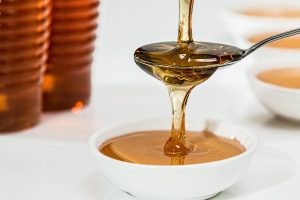 If it were just a matter of cutting out the added sugar in coffee or opting out of that candy bar after work, cutting down on added sugar wouldn't be a problem. However, today sugar is in everything. In fact, each year the average American consumes approximately 152 pounds of sugar in a year. That's three pounds or six cups a week. Great-great-great grandma and grandpa at only about two pounds of sugar 200 years ago. Can you avoid sugar entirely? Are there healthier alternatives to white sugar that you can use to avoid the health issues too much sugar causes?
If it were just a matter of cutting out the added sugar in coffee or opting out of that candy bar after work, cutting down on added sugar wouldn't be a problem. However, today sugar is in everything. In fact, each year the average American consumes approximately 152 pounds of sugar in a year. That's three pounds or six cups a week. Great-great-great grandma and grandpa at only about two pounds of sugar 200 years ago. Can you avoid sugar entirely? Are there healthier alternatives to white sugar that you can use to avoid the health issues too much sugar causes?
Sugar provides extra energy, but that means more calories.
The same is true of sugar substitutes, at least most sugar substitutes. Stevia is one of those exceptions. Stevia comes from the leaves of the Stevia rebaudiana bush in South America. It's 200 times sweeter than sugar, but has zero calories. Unlike sugar, stevia has certain properties that may help lower blood pressure and aid in preventing metabolic syndrome. Its ability to lower blood pressure is the reason you should take care if you already have low blood pressure. Some medications react negatively when you consume stevia.
Fresh fruit can be used in place of sugar.
If you bake, using natural applesauce to replace both the oil and the sugar in the recipe is an option. A paste made of dates is also another exceptionally good sweetener. You can sweeten most desserts naturally by adding fruit. For instance, if you buy yogurt and fruit in the grocery, it normally has added sugar. Make your own by chopping fresh or froze natural fruit into yogurt. While these options do add calories, they also come with nutritional benefits and are far more filling. Date paste is also a great option for diabetics, since it has a low GI rating.
Have you ever tasted monk fruit?
Like stevia, monk fruit has been valued for years for its sweetness. It's about 150 to 300 times sweeter than sugar. It doesn't affect blood glucose levels and has no calories. Monk fruit is also known as Luo Han Guo, longevity fruit and Buddha fruit. It was used by Buddhist Monks in early medicine for upper respiratory problems, and has been proven to reduce mast cells that produce the histamine that causes symptoms of allergies. It also boosts the immune system, since it's high in vitamin C. It also can promote heart health and reduce inflammation that can cause pain and serious conditions. Not everyone likes the taste, which is different than sugar and leaves a residual taste in the mouth. That's why some manufacturers add other ingredients that affect the nutrition of monk fruit. Some people shouldn't use it, like those who have pancreatic problems or allergies to pumpkins.
- A newer entrant in the sweetness market is the yacon plant. It has a flower like a daisy, but a root like a sweet potato. It can be eaten raw, tastes like a combination of apple, celery and watermelon and has the texture of water chestnuts. The root is boiled down to get a sugar substitute that lowers blood sugar.
- While 100 grams of honey is only slightly lower in calories than 100 grams of sugar, honey contains enzymes, iron, antioxidants, calcium, potassium, phosphorous, vitamin B6, riboflavin and niacin. A tablespoon of raw honey has a lower glycemic impact than a banana. Darker honey is more nutritious.
- Coconut sugar has a third fewer calories than table sugar. It is high in iron, zinc, polyphenols, potassium, antioxidants, calcium and other plant nutrients. It's a good sugar substitute for baking.
- Sugar alcohol, such as xylitol and erythritol have proven beneficial for diabetics and packed with antioxidants. Xylitol may prevent tooth decay, reduce the risk of infection, has a low GI, but also may cause diarrhea and gas.
For more information, contact us today at Habitat Health & Fitness
Are Artificial Sweeteners Really That Bad?
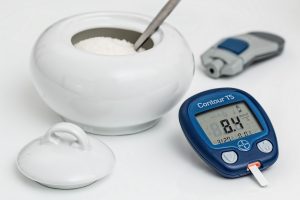 New clients at Habitat Health and Fitness in Lakeland, FL, ask me about sugar substitutes and artificial sweeteners. It's normally in response to the initial cravings of giving up sugar. Choosing to opt for an artificial sweetener may mean you're loading up your body with chemicals and that can be as bad or worse as using regular cane or beet sugar. In my estimation, giving up food with added sugar is one of the biggest obstacles in living healthier. Once you change your eating habits, you won't find adding sugar necessary and be able to taste the sweetness of fresh fruit and vegetables.
New clients at Habitat Health and Fitness in Lakeland, FL, ask me about sugar substitutes and artificial sweeteners. It's normally in response to the initial cravings of giving up sugar. Choosing to opt for an artificial sweetener may mean you're loading up your body with chemicals and that can be as bad or worse as using regular cane or beet sugar. In my estimation, giving up food with added sugar is one of the biggest obstacles in living healthier. Once you change your eating habits, you won't find adding sugar necessary and be able to taste the sweetness of fresh fruit and vegetables.
There are a number of artificial sweeteners according to the FDA.
The most common types of artificial sweeteners are acesulfame potassium, neotame, saccharin, aspartame and sucralose as the five types of artificial sweeteners. Each of these has a difference chemical formula and react with the body and brain differently. Artificial sweeteners change how the brain and taste buds perceive sweetness. In fact, many are far sweeter than sugar and create an overstimulation of the sweetness receptors in the brain. They can change how the brain perceives natural sugars and how low sugar foods like meat and vegetables taste. Those changes can make it difficult to stick with a healthy diet.
Are artificial sweeteners good for weight loss?
Because of their super sweetness, artificial sweeteners give you the sugar flavor with fewer calories than sugar. While you might think that cutting out the calories in sugar will automatically help you lose weight, that's not necessarily true for all artificial sweeteners. There are studies that say artificial sweeteners increase your appetite and those that suggest some really do cut your appetite. The problem may not be the artificial sweetener, but that people feel they're saving calories, so they indulge in other foods that contain more calories.
Diabetics may benefit from using artificial sweeteners.
Diabetics need to avoid foods that cause a rise in blood glucose levels, so artificial sweeteners may be a good option. However, as with all studies, there are always contradictory findings. Another study showed that people who drank soft drinks with artificial sweeteners increased their risk of developing diabetes significantly. Heritage may play a role in your body's reaction to artificial sweeteners. A study of Hispanic women showed their blood sugar level rose 14% and insulin levels rose 20%. if they drank an artificially sweetened soft drink before they drank a soft drink with sugar.
- Recent studies in seniors showed that those who drank the most artificially sweetened soft drinks had the biggest abdominal circumference measurement. Another study showed they increased the risk of diabetes by 67%.
- Studies showed that people who drank more than 24-ounces of artificially sweetened soft drink had a 23% increased risk of stroke compared to those who drank 12-ounces or less.
- Using artificial sweeteners can change the gut microbiome, which affects all parts of the body, including the brain. Some sweeteners have a negative impact on digestion and can cause gas and diarrhea.
- If you have diabetes or a metabolic disease, always check with your health care professional before changing your diet. For most people, giving up food with added sugar can be tough at first, but then the true sweetness of fruit becomes more apparent and added sugar isn't necessary.
For more information, contact us today at Habitat Health & Fitness
Food Staples For A Healthy Home
 We've all seen the run on toilet paper and the problems after a storm that might make you want to stock up on healthy food staples. Stocking up is good when prices are rising, especially if you find some that are bargain priced. Start with canned goods. Not all canned goods are unhealthy. Even green beans with added salt can be rinsed to make them healthier. Canned tomatoes, corn, carrots, spinach and peas should also be on your shelf. Canned fruit packed in its own juice should be a top option.
We've all seen the run on toilet paper and the problems after a storm that might make you want to stock up on healthy food staples. Stocking up is good when prices are rising, especially if you find some that are bargain priced. Start with canned goods. Not all canned goods are unhealthy. Even green beans with added salt can be rinsed to make them healthier. Canned tomatoes, corn, carrots, spinach and peas should also be on your shelf. Canned fruit packed in its own juice should be a top option.
Protein sources are important.
Canned mackerel, salmon and tuna are also great options to have on hand in a pinch. Even sodium free water-packed sardines can are good options. While canned beans and chickpeas without additives are healthy options, you're better off purchasing the dried beans, lentils and chickpeas. They're cheaper and long-lasting. You can also buy them in bulk and put in mason jars for display. Nut butters, like almond and peanut butter are great options. Go for the organic ones that only contain one ingredient, the nut.
Have grains ready to use.
Whether you choose stone ground oatmeal, rice, quinoa or whole grain pasta, having stocks of these grains can add bulk and nutrition to any meal. Quinoa is also a good source of protein that can be used in salads. Opt for brown rice or wild rice for the healthiest options. If you want a quick treat that everyone will love, toast oats and mix most with peanut butter and a small amount of honey, keeping some set aside. Make balls the size of golf balls. Roll the balls in the oats not used and let sit for an hour. It's quick, healthy and can be made from items you stockpile ahead.
Don't forget some of the condiments and extras.
Apple cider vinegar, balsamic vinegar, coconut and olive oil are important ingredients to have available that can be used in many recipes. Stocking up on white distilled vinegar is also important. You can use it as a cleaning product, since it disinfects. Spray it on the tub or in the toilet to cut the calcium and soap build-up. Even healthy dressings have a decent shelf life.
- If you want a healthy option for a cheesy flavor, buy nutritional yeast and keep on hand. Stock up on popcorn as a good snack and use the yeast to add extra flavor.
- Some premade soups are extremely nutritious and can be a quick meal. Just include some whole grain biscuits or bread and a salad on the side.
- While nuts and trail mixes are good options for emergencies, nuts don't store well and succumb to oxygen, heat and light. If you do buy extra for use, store in smaller vacuum-packed containers in the freezer to maintain freshness.
- Dried fruit, such as raisins, have a varied shelf life and last longer in the freezer. On the shelf they can last anywhere from three months to over a year. If you want fresh fruit, apples are a good choice with a three-month shelf life.
For more information, contact us today at Habitat Health & Fitness
Is Coconut Milk Good For You?
 There are many reasons people love being part of the family at Habitat Health and Fitness in Lakeland, FL. Getting responsible answers in almost any area of fitness, either directly or in a blog is one. I've been getting quite a few questions about the difference between coconut water and coconut milk, and if coconut milk is good for you. Coconut water is found naturally inside young coconuts that eventually hardens to form the meat of the coconut. Coconut milk is more like a tea. It starts with the flesh of mature coconuts that's grated, mixed with water and simmered until a desired consistency, then strained to remove any solids that remain.
There are many reasons people love being part of the family at Habitat Health and Fitness in Lakeland, FL. Getting responsible answers in almost any area of fitness, either directly or in a blog is one. I've been getting quite a few questions about the difference between coconut water and coconut milk, and if coconut milk is good for you. Coconut water is found naturally inside young coconuts that eventually hardens to form the meat of the coconut. Coconut milk is more like a tea. It starts with the flesh of mature coconuts that's grated, mixed with water and simmered until a desired consistency, then strained to remove any solids that remain.
There are two types of coconut milk and a difference in nutrients.
The nutritional profile of coconut water is far different and healthier than coconut milk. Even within the category of coconut milk, there are two different types, canned or carton, one which is healthier than the other. Carton coconut milk is lower in calories, like its counterpart coconut water. Canned coconut milk can have as many as 552 calories for a cup, while carton milk can be as low as 40 and coconut water, 46 calories. Fat is the prominent ingredient in coconut milk in cans, while coconut water is carbs and water. Both of those provide a wealth of nutrients and contain few additives.
Carton coconut milk sold as an alternative to dairy is quite different.
I am always amazed at how manufacturers find ways to comply with the demand of the public, but don't always give them what they want. The ingredient list for one type of carton coconut milk includes added sugar and salt. Here's the list for the dairy alternative unsweetened type. Coconut milk (Filtered Water, Coconut Cream), Vitamin and Mineral Blend (Calcium Carbonate, Vitamin E Acetate, Vitamin A Palmitate, Vitamin D2, Vitamin B12), Dipotassium Phosphate, Sea Salt, Sunflower Lecithin, Locust Bean Gum, Gellan Gum, Ascorbic Acid (to protect freshness), Natural Flavor. That's a lot of added ingredients. Rule of thumb, the more additives, the less healthy it is.
It's simple to make your own coconut milk
If you like the flavor of coconut milk and want it to be pure as possible, start with the meat of one coconut and a cup of filtered water. Chop the meat and blend it with the water. Pour into cheesecloth, add a half cup of water to the blender to mix with what's left over and add to the cheesecloth, then strain out the milk, squeezing it to get the last drop.
- One cup of canned coconut milk has 5.5 grams of protein, compared to 2 grams in coconut milk. Carton coconut milk contains no protein. Coconut water and canned coconut milk magnesium, potassium, manganese and sodium. Carton coconut milk contains calcium and iron.
- Since there are additives in carton coconut milk, it contains vitamin D, vitamin A, E and B12, while canned coconut milk and water contain none, but does contain vitamin C and folate.
- Some types of carton coconut milk contain carrageenan. It helps prevent the milk from separating and is used as a stabilizer. Anyone that has an inflammatory condition, like IBS, should avoid it.
- Ironically, true coconut milk without additives may actually reduce inflammation. If you can't drink dairy, coconut milk is a good alternative, but for the biggest health benefits, make it yourself.
For more information, contact us today at Habitat Health & Fitness
What Causes IBS?
 IBS--- irritable bowel syndrome---causes abdominal pain and changes in your bowel movements that include constipation, diarrhea or both. It all depends on the type of IBS you have. Other symptoms include the feeling you haven't finished in the bathroom, even though you just went, bloating and white mucus in your bowel movements. It can cause considerable discomfort, but normally doesn't cause digestive tract damage. Unfortunately, IBS can last years.
IBS--- irritable bowel syndrome---causes abdominal pain and changes in your bowel movements that include constipation, diarrhea or both. It all depends on the type of IBS you have. Other symptoms include the feeling you haven't finished in the bathroom, even though you just went, bloating and white mucus in your bowel movements. It can cause considerable discomfort, but normally doesn't cause digestive tract damage. Unfortunately, IBS can last years.
Your brain and your gut may not be working together well.
If there's a problem with the brain-gut interaction, it can affect the functions of the body. One of those indications are the symptoms of IBS. It may cause food to move too slowly through the digestive tract or make it move too quickly. Both of those can cause bowel movement changes, an abnormal amount of gas and pain.
People with IBS may have similar problems.
When studying IBS, doctors did find some factors that were common to most people with IBS. Not all people have had all these things occur in life, but may have one or two. Depression, anxiety and somatic symptoms are common in people with IBS. Digestive tract bacterial infections are as well. The gut microbiome is often unhealthy with bacterial overgrowth in the small intestines and/or a change in the type of bacteria in the small intestines. Stressful events in early life like sexual abuse or physical abuse can also be one of the commonality among IBS sufferers. IBS sufferers often have food sensitivities and intolerances. Genetic make-up may also play a role.
The treatment will vary based on the individual.
For some people, lifestyle changes may be all they need to get help with IBS. Changes include eating more fiber, identifying and avoiding food you can't tolerate, such as gluten or dairy, reducing stress and increasing physical activity (which can also reduce stress). Adequate sleep is important, too. Some doctors recommend probiotics if they find a problem with gut microbes. Sometimes mental health therapies can help, such as relaxation training, hypnotherapy to improve gut health and cognitive therapy to help change behavior and thought patterns that affect IBS. Doctors may also prescribe medication to help with diarrhea, constipation or spasms.
- Adding more fiber to your diet may be a help. Soluble fiber is a prebiotic that feeds beneficial microbes. Insoluble fiber adds bulk to stools. Studies show soluble fiber helps most. It's found in fruit, vegetables, nuts, oats and beans.
- Maybe gluten is your problem. Gluten is found in wheat, rye and barley. It can cause many of the symptoms of IBS, even if they don't have celiac disease.
- Try a low FODMAP diet. A low FODMAP diet strives to reduce food that contain certain hard-to-digest fermentable carbs. Wheat, garlic, onion, certain fruits and vegetables and beans contain them.
- IBS used to have many names, such as colitis, spastic colon or bowel and nervous colon. About 12% of the population suffers from IBS.
For more information, contact us today at Habitat Health and Fitness
What Causes High Blood Pressure?
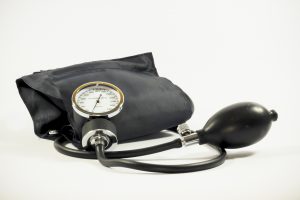 At Habitat Health and Fitness in Lakeland, FL, identifying the causes of preventable health issues and making lifestyle changes to avoid future damage, can boost health and vigor. One common problem faced by many people is consistent high blood pressure---hypertension. About 45% of all people have or will develop it. It's a silent killer, because left unaddressed, it can lead to stroke, kidney damage, hardening of the arteries, dementia and early cognitive decline. In the early stages, most people don't realize they have a problem because there often aren't any symptoms.
At Habitat Health and Fitness in Lakeland, FL, identifying the causes of preventable health issues and making lifestyle changes to avoid future damage, can boost health and vigor. One common problem faced by many people is consistent high blood pressure---hypertension. About 45% of all people have or will develop it. It's a silent killer, because left unaddressed, it can lead to stroke, kidney damage, hardening of the arteries, dementia and early cognitive decline. In the early stages, most people don't realize they have a problem because there often aren't any symptoms.
High blood pressure means your heart has to beat harder.
Your blood pressure is a measure of the force your blood exerts against the blood vessel and artery walls. The top number is the systolic blood pressure, which is the force that occurs in the arteries as your heart beats. The second number is the force that's in the arteries between beats. The higher the number, the harder your heart is working. That can make the heart work less efficiently. The tissue inside your artery walls is delicate and subject to damage over time. It can cause tiny tears, which bad---LDL---cholesterol creates plaque that sticks to those damaged walls and builds up to narrow the arteries even further.
Changing your diet can help.
Not only does processed food contain few nutrients and minimal fiber, it contains salt, sugar and additives that can affect your blood pressure. The sodium in salt has a direct impact on your blood pressure. It pulls in fluid to your vessels from surrounding tissues and increases your volume of blood. More blood equals more volume and higher pressure. Salt is a common ingredient in processed and restaurant food. A bad diet can also cause weight gain and the more you weigh, the more blood the heart has to pump, increasing blood pressure.
Lack of exercise can affect your blood pressure negatively in a few different ways.
Not only will sitting too much, not getting adequate exercise, cause weight gain and less muscle tissue, it can affect your blood pressure. First, the less you exercise and the less muscle tissue you have, the more prone you'll be to weight gain. The heavier you are, the higher your blood pressure will go. Blood pressure is affected by a sedentary lifestyle another way. When you have adequate aerobic activity, it helps keep your blood vessels more flexible and makes them less sensitive to changes in hormones. Exercise helps slow arterial hardening that makes both your blood vessels and heart work harder.
- Elevated blood pressure starts when the systolic number---the top number---is over 120. Stage one hypertension starts at 130/80. Stage two begins at 140/90. A hypertensive crisis occurs of you systolic number is higher than 180 or the diastolic number is higher than 120.
- Bad habits can cause high blood pressure. Too much alcohol or a tobacco habit can increase your blood pressure. Binge drinking can cause build up of arterial plaque, while the nicotine in cigarettes can increase blood pressure and heart rate.
- Stress can cause blood pressure to rise. Exercise is one way to relieve stress, but so are meditation and breathing exercises. Getting together with friends and socializing can also help lower blood pressure.
- Some people are genetically prone to high blood pressure, but still can help delay the onset of it. Making lifestyle changes can help prevent early onset high blood pressure and reduce the damage it causes.
For more information, contact us today at Habitat Health and Fitness
- « Previous Page
- 1
- …
- 8
- 9
- 10
- 11
- 12
- …
- 16
- Next Page »

